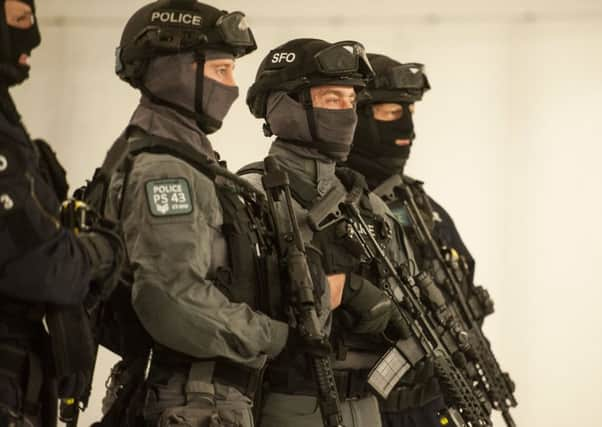Calum Steele: We need to talk about violence faced by police


This is perhaps understandable when the police service itself paints a picture that its armed officers are balaclava-clad, machine gun-toting commandos. The truth is Scotland has some of the best firearms and specialist officers anywhere, but this macho imagery alienates rather than reassures the public. Of course the service must have these capabilities but pretending to the public that these are the type of officers that would be deployed to a terrorist event takes them for fools.
Let us not kid ourselves that the first officer that will chance upon or be sent to a vehicle and knife-type attack will be anyone other than your ordinary response officer. The service doggedly avoids answering the question of what it expects these officers to do while awaiting support from those who are better protected.
Advertisement
Hide AdAdvertisement
Hide AdAnd this is where the conundrum lies. “Run, hide and tell” is the police advice to the public if they find themselves in such situations. What many may not know is that the training provided to police for bladed weapon incidents is effectively the same – officers are trained to CUT – create distance (run), use cover (hide) and transmit for assistance (tell).
On the one hand the service tells officers to run, hide and tell while on the other public expectation and indeed organisational practice places an implied obligation on officers to intervene regardless of the personal consequences. Police are not expendable but day in, day out they are exposed to extreme violence while the service worries about reputational sensitivities more than it does the danger it exposes its officers to.
The fact Scotland isn’t England (or France or Belgium) is not a sound basis for decision making. Norway, Canada, Australia, Sweden and Denmark are hardly bastions of illiberal attitudes but all have seen attacks on officers. Police have been attacked with knives from the far north of Shetland to the far west of Lewis. This is not solely the urban west of Scotland problem many would mislead you to believe.
Too many police have suffered life-altering and career-ending injuries as a result of being expected to wade in to violent incidents with inadequate protection. Hardly a day goes by when newspapers don’t carry reports of the most horrific violence and brutality in Scotland. Murders, gang fights, beatings, stabbings and robberies are frighteningly common, yet time and again these events take place without thought of deploying our more specialist assets.
Of course it is right we safeguard our democratic institutions but as important as it is to protect our buildings, it’s much more important we protect our citizens and protect those we charge with protecting others. If it takes too long to deploy the specialists we have, we undermine the arguments for having them.
Scotland is long overdue a sensible evidence based and informed discussion about the risks and violence faced by police. That debate cannot take place when the service arranges ill-advised photocalls and while faux-outrage pictures of officers buying food is the level at which our news agencies pitch the arguments.
l Calum Steele is general secretary of the Scottish Police Federation